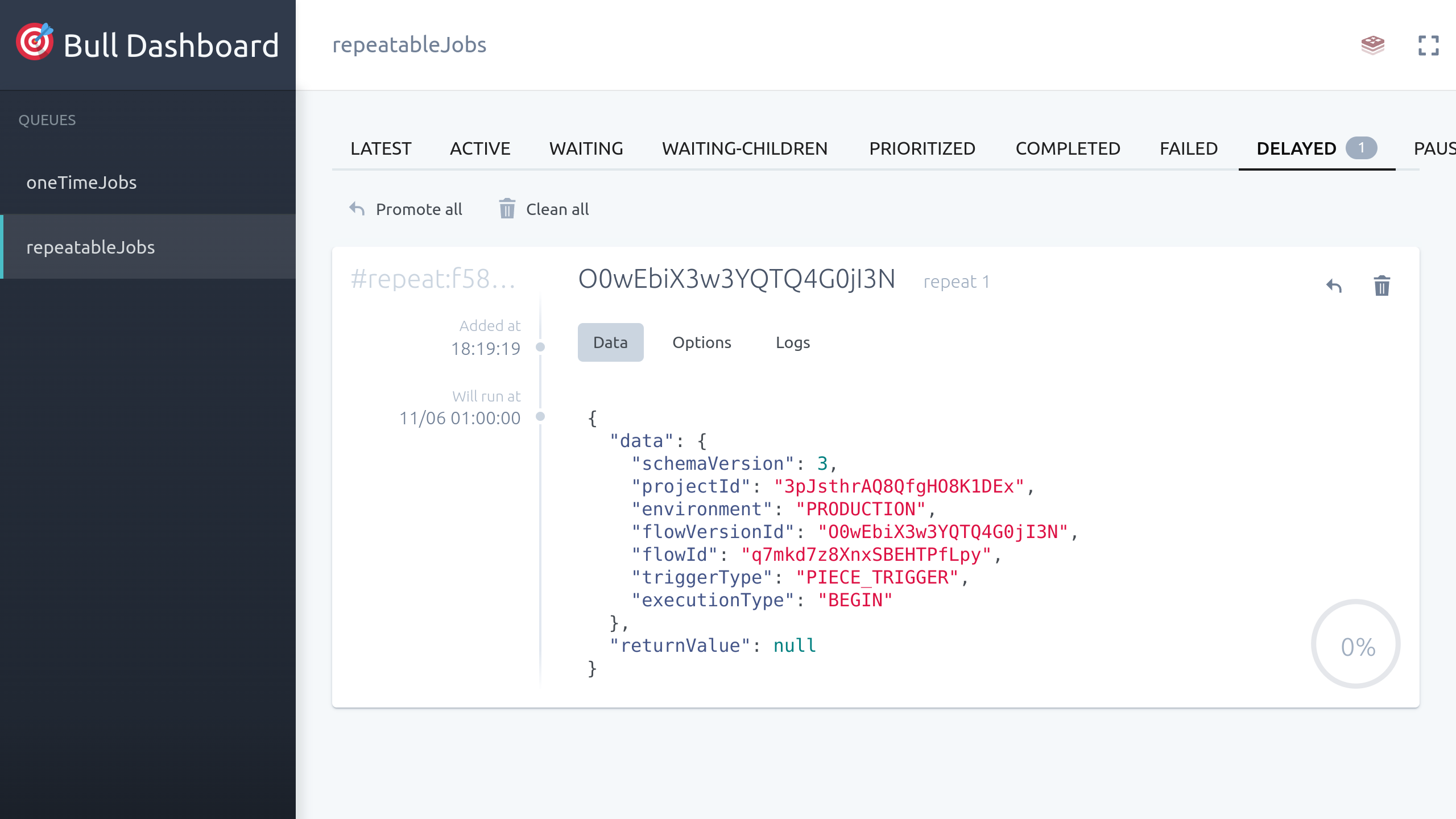Runs with Internal Errors or Scheduling Issues
The Bull Board is a tool that allows you to check runs for issues. It is accessible when you are using Redis as the queue system. In production mode, you can access it at/api/ui, and in development mode, it is located at /ui.
To enable the Bull Board UI, follow these steps:
- Define the following environment variables:
AP_QUEUE_UI_ENABLED: Set it totrue.AP_QUEUE_UI_USERNAME: Set it to your desired username.AP_QUEUE_UI_PASSWORD: Set it to your desired password.
/api/ui (production) or /ui (development) depending on your environment.
 There are two queues that you can monitor:
There are two queues that you can monitor:
- oneTimeJobs: This queue is used for currently pending runs.
- repeatableJobs: This queue is used for polling triggers.
Reset Password
If you forgot your password on self hosted instance, you can reset it using the following steps: Postgres-
Locate PostgreSQL Docker Container:
- Use a command like
docker psto find the PostgreSQL container.
- Use a command like
-
Access the Container:
- Use SSH to access the PostgreSQL Docker container.
-
Open the PostgreSQL Console:
- Inside the container, open the PostgreSQL console with the
psqlcommand.
- Inside the container, open the PostgreSQL console with the
-
Create a Secure Password:
- Use a tool like bcrypt.online to generate a new secure password, number of rounds is 10.
-
Update Your Password:
- Run the following SQL query within the PostgreSQL console, replacing
HASH_PASSWORDwith your new password andYOUR_EMAIL_ADDRESSwith your email.
- Run the following SQL query within the PostgreSQL console, replacing
-
Open the SQLite3 Shell:
- Access the SQLite3 database by opening the SQLite3 shell. Replace “database.db” with the actual name of your SQLite3 database file if it’s different.
-
Create a Secure Password:
- Use a tool like bcrypt.online to generate a new secure password, number of rounds is 10.
-
Reset Your Password:
- Once inside the SQLite3 shell, you can update your password with an SQL query. Replace
HASH_PASSWORDwith your new password andYOUR_USERNAMEwith your username or email.
- Once inside the SQLite3 shell, you can update your password with an SQL query. Replace
-
Exit the SQLite3 Shell:
- After making the changes, exit the SQLite3 shell by typing:

